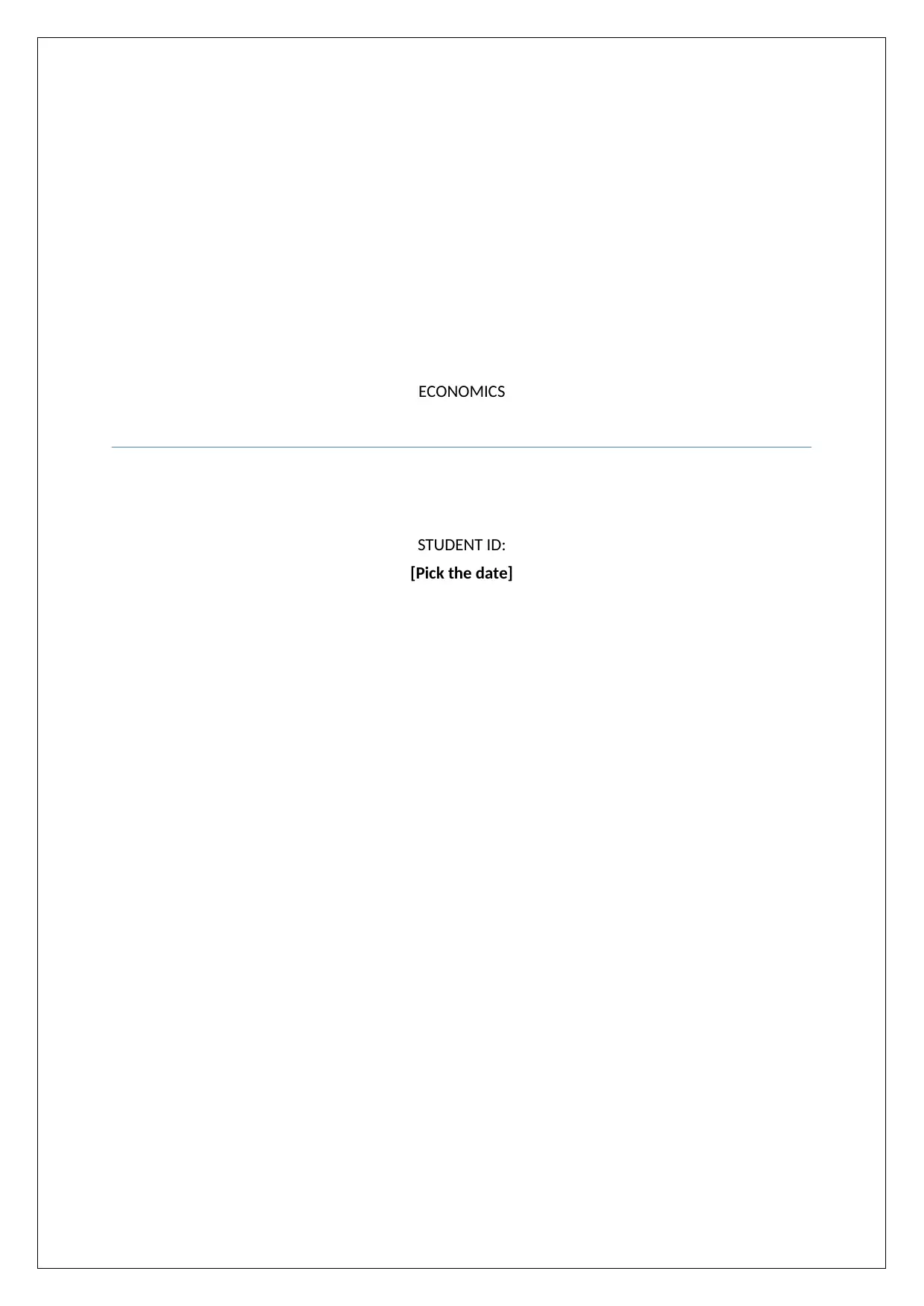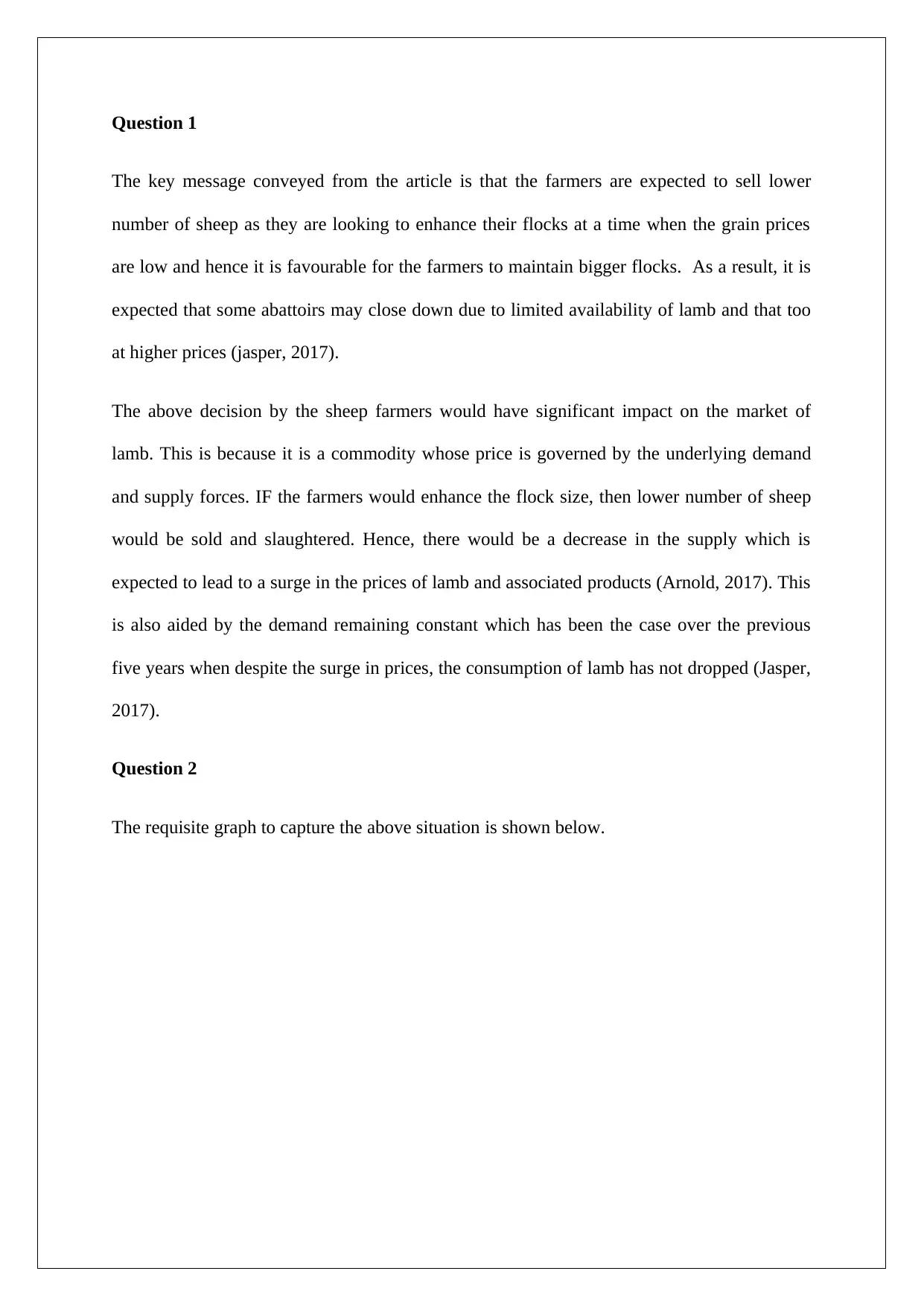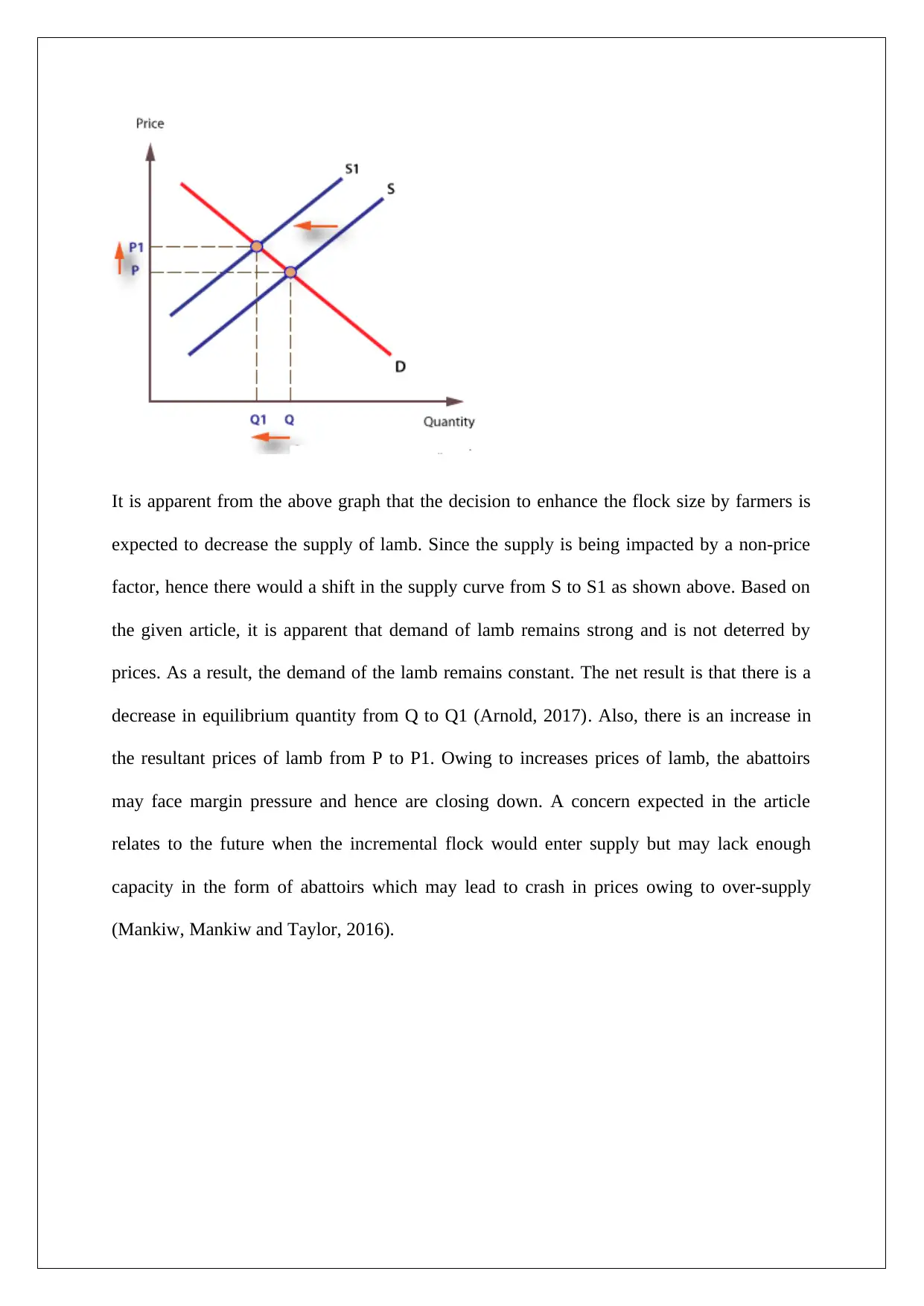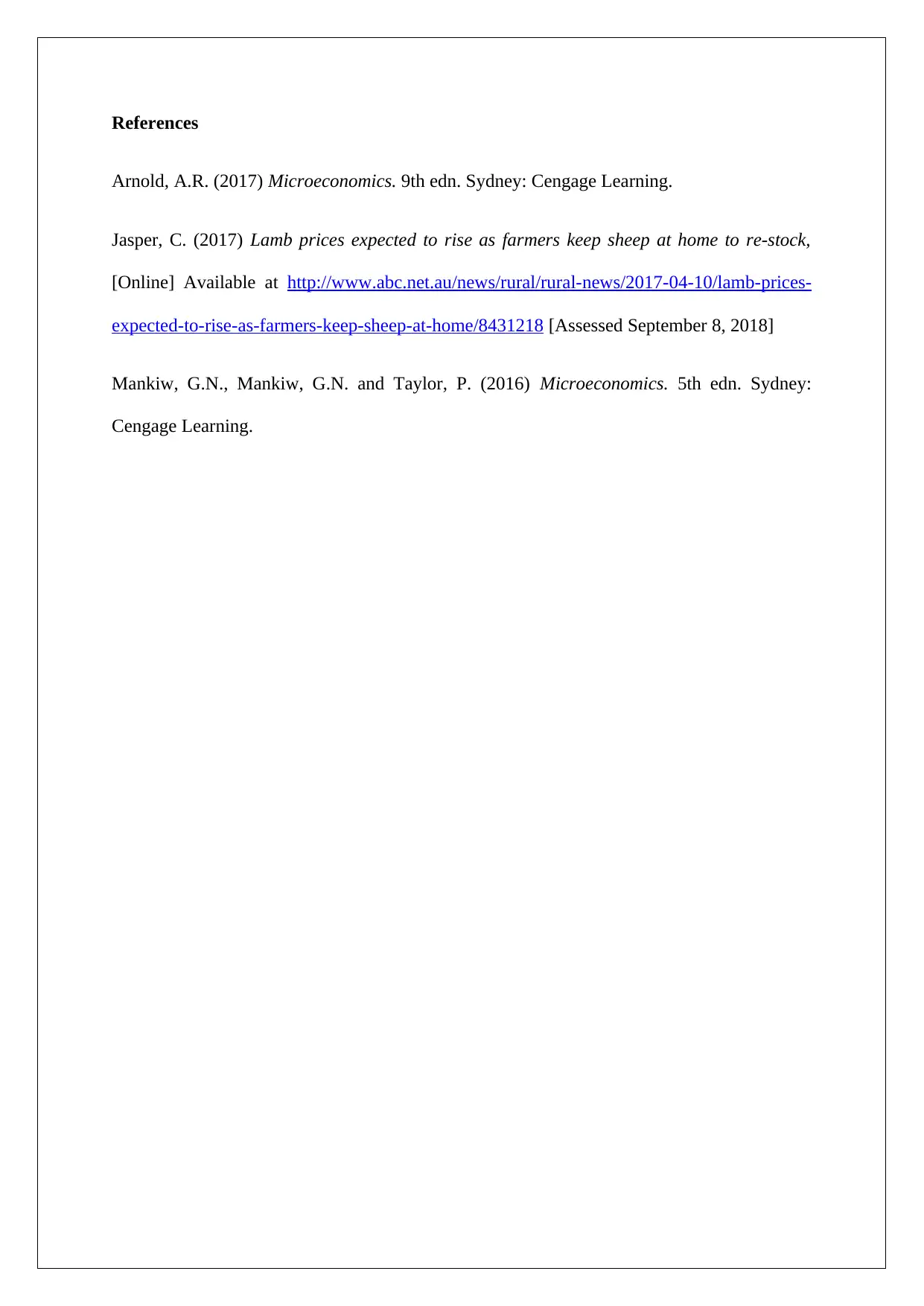Economics Report: Impact of Sheep Farming on the Lamb Market Dynamics
VerifiedAdded on 2023/06/06
|4
|503
|154
Report
AI Summary
This report analyzes the economics of the lamb market, focusing on the impact of sheep farmers' decisions to increase flock sizes on the supply and price of lamb. The report examines how a decrease in supply, caused by farmers retaining sheep, leads to increased prices and potential challenges for abattoirs. The analysis includes a graphical representation of the supply and demand dynamics, illustrating the shift in the supply curve and the resulting changes in equilibrium quantity and price. The report references key economic principles and relevant literature to support its findings, highlighting the interplay between supply, demand, and market forces within the lamb industry. It also touches upon the potential future implications of increased flock sizes and the need for adequate processing capacity.
1 out of 4










![[object Object]](/_next/static/media/star-bottom.7253800d.svg)